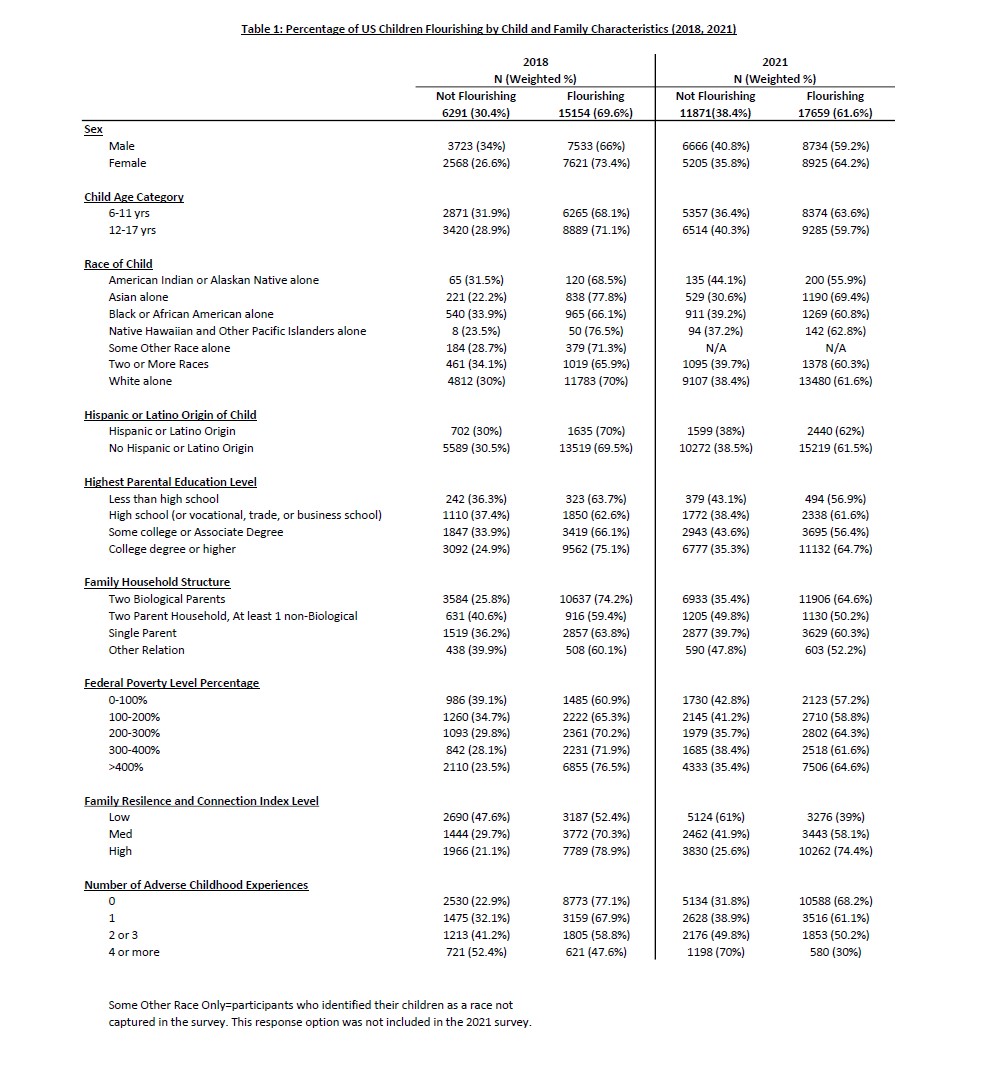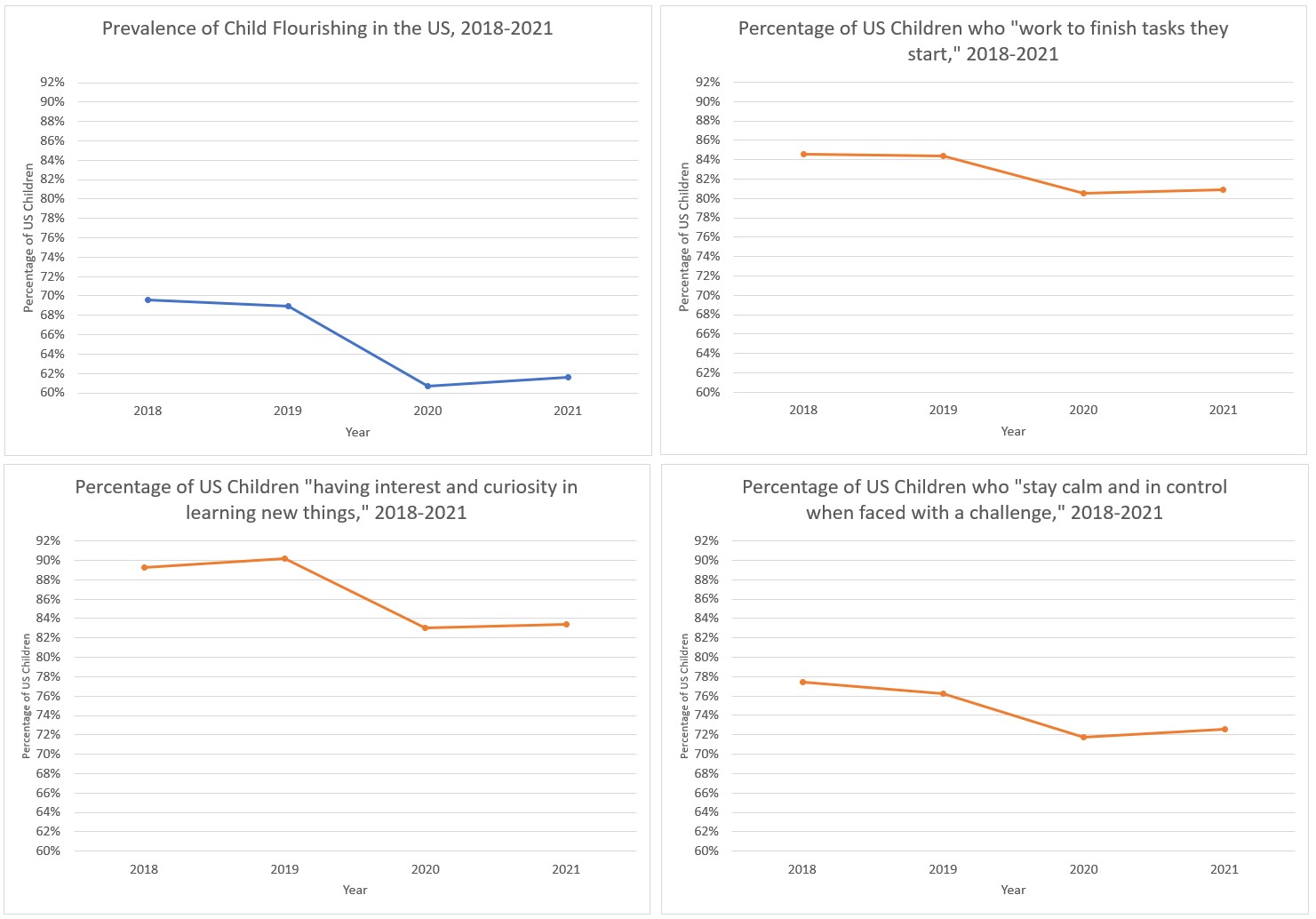Developmental and Behavioral Pediatrics: Other
Developmental and Behavioral Pediatrics 6
705 - Trends and Correlates of Child Flourishing from 2018-2021
Publication Number: 705.308

Thomas Elliott, MD, MSHPM (he/him/his)
Postdoctoral Fellow
University of California, Los Angeles David Geffen School of Medicine
Los Angeles, California, United States
Presenting Author(s)
Background:
Child flourishing is a measure of wellbeing that goes beyond the absence of physical or mental illness and encompasses positive aspects of a child’s life that support appropriate social and emotional development. Given the well-documented impact of the pandemic and related adversity on child health, it is likely that fewer children are flourishing. However, there are no studies describing changes in prevalence of child flourishing since the onset of the COVID-19 pandemic and examining correlates of flourishing in recent national data. Identifying risk and resilience factors associated with flourishing can elucidate targets for interventions to support children’s wellbeing.
Objective:
To describe trends in the prevalence of child flourishing between 2018 and 2021 and identify and compare correlates of child flourishing between 2018 and 2021.
Design/Methods:
We conducted repeated cross-sectional analysis of National Survey of Children’s Health data from 2018-2021. This data was created from responses from adults pertaining to questions about a sample child in their respective household. Adults completed the Child Flourishing Index, which asks about that child’s interest and curiosity in learning new things, completion of tasks once started, and regulation of emotions when challenged. Adults also completed the Family Resilience and Connection Index, reported on their child’s adverse childhood experiences, and supplied household sociodemographic characteristics. Weighted logistic regressions of 2018 and 2021 data tested associations among child characteristics and child flourishing.
Results:
The prevalence of child flourishing decreased from 69.6% (95% CI: 68.3,70.9) in 2018 to 61.6% (95% CI: 60.4, 62.9) in 2021. The largest decline among the individual flourishing measures was in having interest and curiosity in learning new things (89.3% (95% CI: 88.4, 90.2) in 2018 to 83.4% (95% CI: 82.4,84.4) in 2021). In both 2018 and 2021, after controlling for sociodemographic characteristics, increased levels of family resilience and connection were positively associated with flourishing (p< 0.001), and increasing levels of adverse childhood experiences were negatively associated with flourishing (p< 0.01).
Conclusion(s):
There was significant decline in child flourishing over the 2018-2021 period, with the largest loss exhibited in endorsement of child interest and curiosity in learning new things. Given the disruption of family and school life during the pandemic, future interventions might target the interaction between children, their families, and the school experience to improve flourishing. 


